- Published on
Why and How to make a Parabolic Dome
- Authors

- Name
- Adam Piskorek
- @hvitis_

Why Do We Need Cheaper and More Sustainable Houses?
Let's ask ourselves, what is the core reason of people´s actions? Mises' take on it was that Human action is necessarily always rational. Maslow's take on our actions is strictly connected with affections and security:
The fact is that people are good, Give people affection and security, and they will give affection and be secure in their feelings and their behavior.
Most of us are security-driven, rational beings. According to Maslow's hierarchy of needs on the bottom of the pyramid we have rest, warmth, then the second level is private property and security. The problem is that the shape and condition of current economy and trends in society is not helping people to achieve this - very basic - need. We are just going out of major housing bubble and we may be going into another one.
On higher levels of the pyramid, we have love, esteem, friends, goals, creativty etc. which are blocked by the lack of the lower once. This gives us pretty clear picture of what is going wrong. How people can reach for all those amazing qualities and feelings if they struggle to find security and house? How is it possible that in the most automated and advanced civilization that ever existed it takes a lifetime to save-up for a house?
This causes the surge of the going back 'into the wild' and walden-like youtube channels where people live close with nature. Not everybody could do it and even so - we should learn to combine technology and nature, not run away from it. Technology is for people - not the other way around.
People struggle with having a house, they put majority of their lives into acquiring the very basic human need. Some people go to the extreme to fight that. Theory goes that 5th of population involved with useless jobs. The rapid pace that technology has morphed the civilization, made us forget and drift away from sustainable ways of living. The feedback loop is very slow in this case, thus we don't see immediate consequences of hurting mother nature and can't adapt quickly enough. As a society, we are just lagging behind on all levels - one of those is lack of available housing solutions. Basic needs have to be fulfilled before rising to higher - intellectual, spiritual, cultural - needs.
How Buckminster Fuller Geodesic Dymaxion Dome Solves this Partially
Buckminster Fuller introduced the idea of domes - fullerene Geodesic houses as a solution for humanity problems. It has enormous advantages, just to name a few most important once:
- Strength - resistent to extreme winds, earthquakes.
- Cost - very cheap to build.
- Energy efficient - the most efficient shape when it comes to heat convection.
- Temperature maintainability.

Fulleren balls is a great concept from physical and chemical point of view, but there are downsides when used for dwellings. They may be problematic when it comes to interior design - each house is based on fullerene concept where skeleton is constituted by nodes tightly connected with each other. This causes circular shape and that makes it difficult to allocate space in 'the corners'. The main problem of this shape is that it's difficult to allocate space above the ground floor. There is more that caused the dome to become just a futuristic curiosity but those are social aspects:
- Decrease of the appeal - many domes are just ugly if not designed properly.
- Social pressure of having a not-normal house.
- Lack of trained people to construct them.
- Reselling of the dome.
There are downsides of this solution when it comes to urban areas. The usage of the sphere makes it difficult to build block of flats, thus accomodate current size of human population. The sphere inside is difficult to fill.
Even tho there are disadvantages, people are building those houses. Currently if you want to buy a modular copula house (a dome house) you can do that already for around 20 000 USD. You can check the look of the modular design. This is a good price that does not require decades of putting oneself in debt. In the very Spain, that has abundance of wood and space, the costs rise 3folds for such a house due to being made for custom-only projects.
Let's get down to Earth and be practical - How We Could Fix Domes?
We said on the beginning that there is a number of problems that dome structures face. Let's take the most important disadvantage - a physical one, the one that will not change with time and human fashion - space allocation above the ground floor.
Gaudi's copulas could be extremely high and maintain durability. They drastically increase the amount of space in a vertical shape.
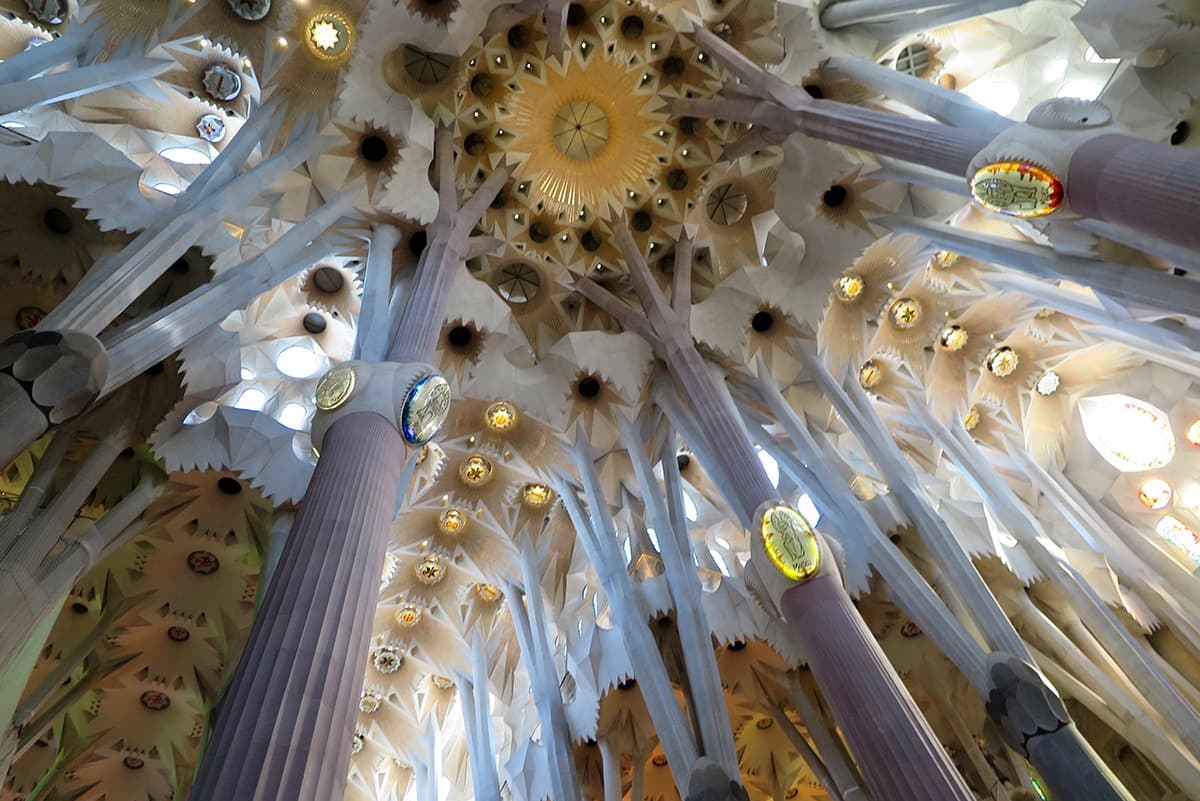
This shape maintains low complexity and can allow modularity. Increase the amount of space vertically available for inhabitants. Such a parabolical shape applied to modern construction that has plenty of vertical space can be nowadays observed in Barcelona.

So What about allocating space above the ground level?
In order to make the whole idea cheap and accessible we need to use modularity - just as heat shield.
There is an architect called George Suyama. The simplicity of his famous house made of modules that he covered with a protective layer, is stunning.
He built room modules inside his house and covered them with a shell. The modularity of the inside allows to increase used surface. In the parabolic-dome-case, the modules could be allocated on top of each other in order to allocate space vertically.
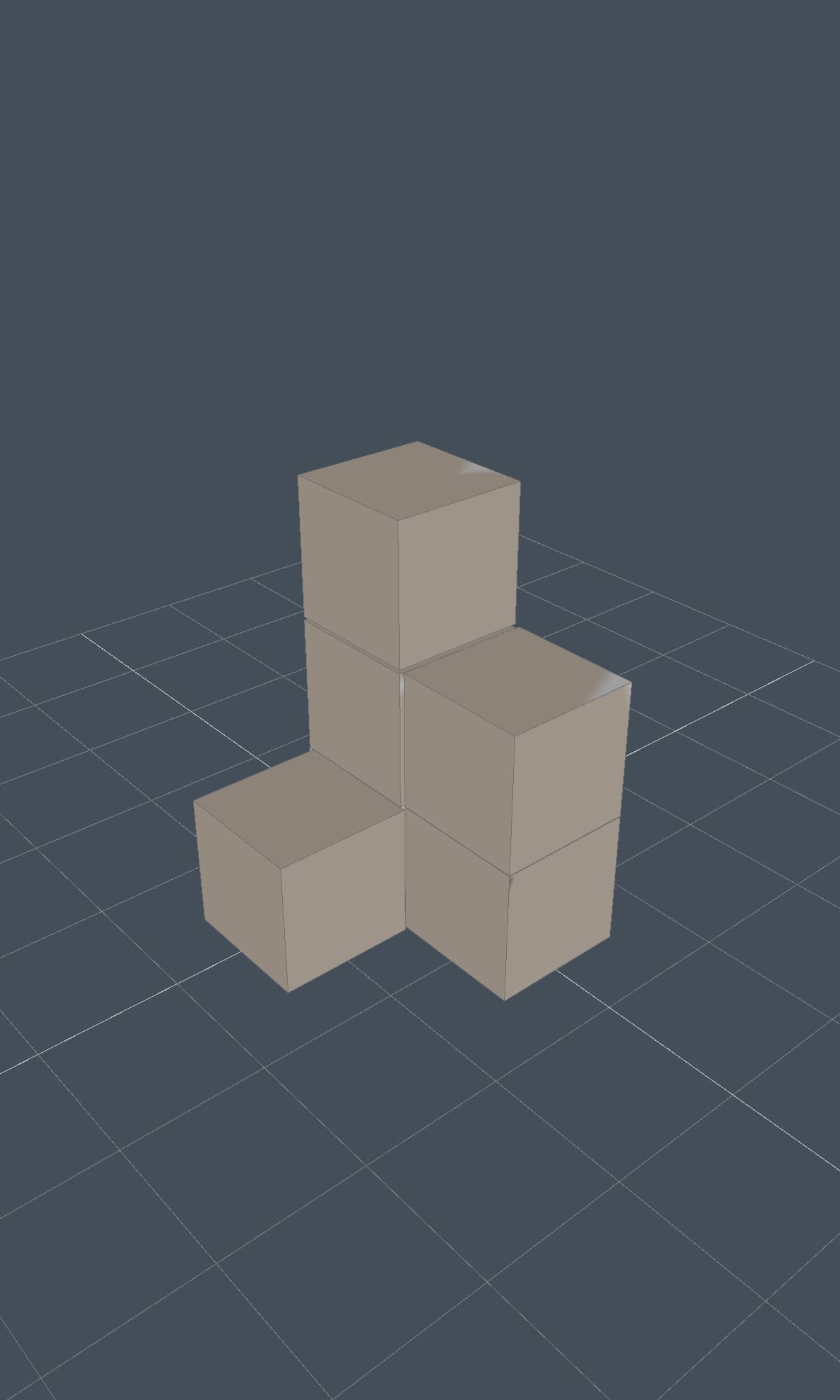
How Could Habitat Modules Be Protected?
This is the culmination of the idea. Just as George Suyama did with the triangle, here it can be dome with.. a dome. The idea of surrounding inner modules made out of clay looks like this:
The outer layer could be in a dome-like, half-sphere shape, like the clay one but elongated, in a Gaudi style that brings it closer to paraboloid shape. Like this:
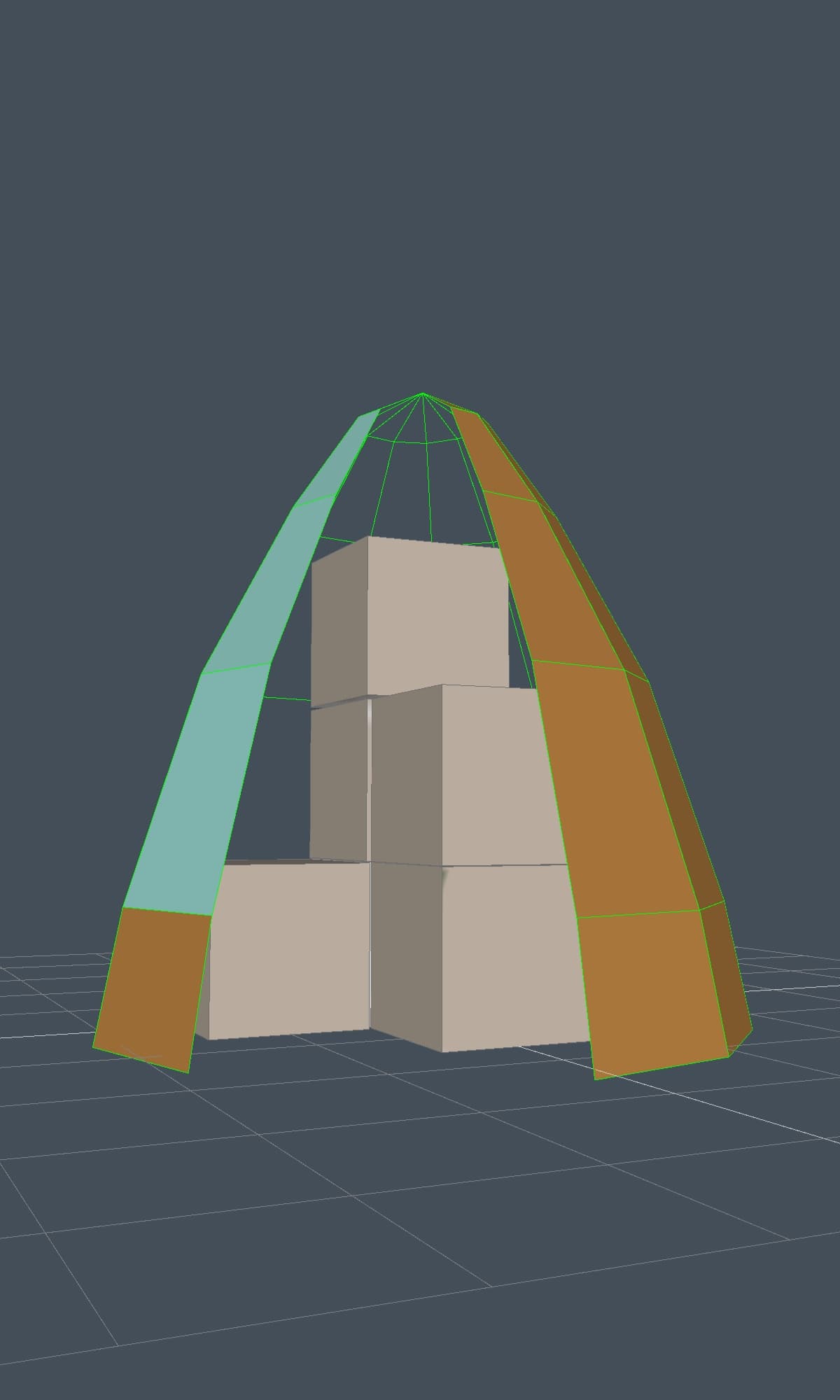
The outer layer, if made from e.g. hexagonal modules can be prefabricated, highly customizable (solar, window, insulation), durable and sustainable. It could be achieved due to modularity. This way we could customize all the house, starting from the amount and type of rooms, finishing on the amount and type of windows.
Outer layer could be made of 3 types of modules:
- Protective, isolating.
- Window, transparent.
- Solar modules.



Having such a construction we allow people to change the amount of modules for their needs giving them freedom and customization options. More isolation modules on Northern sphere. ofMore transparent modules in low light conditions etc.
This idea is combining the overwhelming sphere like space of Buckminster's Domes with current cubical solutions. This is putting a step forward when leaving from cubical room into awe-like space surrounding inhabited space.
The shapes of the modules, connections, dimensions, materials etc will be investigated. The general idea is that modularity can allow the domes to be customizable and prefabricated. The prefabrication allows for having a simplified construction process thus making it cheaper. Just as Soviet Union was building block of flats.
Modules in this case could be of 2 kinds. Exterior for parabolic copula and interior for rooms. The interior modules are already popular idea, widely used in Germany. The 'exterior', 'roof', the paraboloid has to be design for manufacturing.
Each module would be filling the frame designed to be connected with others for quick assembling and offsite production. This allows for creativity when maintaining the simplicity and universality.
The other problems that were listed on the beginning are mostly social one and apostatical. If we fulfill the requirements of a house that would be aesthetically pleasing and well designed, the social problem would disappear with time.
Antoni Gaudí wanted to reach even higher - towards the sky. His concepts not only provide with more space but the visual notion of looking at parabolic arc brings aesthetic pleasure. This way we can change the dull dome shape to a piece of art that everyone, naturally, archetypically would love to live in.


Sustainability
Dwellings are environment controlling machines. - Buckminster Fuller
Making the domes from renewable or natural materials is possible. People build their actual domes from wood. As Bucky was saying - houses control the environment. Having a house that is energy efficient and build from renewable materials would actually make a difference. Especially if applied on a bigger scale.
The costs and materials is one thing but the maintenance, costs of repair, energy efficiency also counts. Having them made out of modules it would also be possible to replace them, move them or refurbish if needed.
The paraboloid shape of a house has always seemed to me very natural. Hives are build like that. Anthills are build like that. Slowly freezing drops create this shape. It is extremely difficult to see the cubical form build by complex nature. The only examples I can think of are crystals in inorganic chemistry.
Utilizing the greenhouse effect the domes natually provide, building them in a naturally occurring shape, partially utilizing natural materials with zero or negative carbon emission - all that brings us closer to sustainability. We want to stay here for the next 1000 years, let's think this way.
This was the great glory of the Greeks that they accepted and perfected Nature; as the Parthenon sprang out of the limestone terraces of the Acropolis, carrying the natural lines of the rock by gradations scarce perceptible into the finished and human beauty of frieze and pediment, and as, above, it was open for the blue air of heaven to descend into it for a habitation; - Edward Carpenter
How One Might Do it?
“You never change things by fighting the existing reality. To change something, build a new model that makes the existing model obsolete. ― Buckminster Fuller”
Providing blueprints for using existing production capabilities around the world can release a lot of human potential.
Industrialization coordinate productivity can be employed directly by spontaneous corporation of humanity. - Buckminster Fuller
The revolution with cars not powered by combustibles has already started. Next revolution will be in sustainable housing. The amount of cheap houses needed to sustain living in a city in the next decades will increase at least two-folds. Try watching the speech of Alejandro Aravena where he talks about costs, numbers and giving people the freedom to build for themselves (in towns). Channelling their needs and possibilities.
His example shows that modular inside gives people possibility of expanding and freedom to decide on time and choose adequate size.
Way of doing it is being strong enough to show people what is possible, doable and better.
Apart of modular construction there is a possibility of creating a community or providing connections between different rooms of the house! You can see it on this project:

The private dwelling places, no longer costly and labyrinthine in proportion to the value and number of the treasures they contain, the indwellers will have unfettered egress. Neither man nor woman will be tied in slavery to the lodge which they inhabit; and in becoming once more a part of nature, the human habitation will at length cease to be what it is now for at least half the human race— a prison. So it will not be till we once more find our main interest and life in the life of the community and the gods that a new spirit will inspire our architecture. - Edward Carpenter

Nader Khalili and Combining the Architectural and Spiritual
Nader Khalili was building skyscrapers for 25 years and then he went on a 5 years quest through the iranian desert to see how people with no money could build houses. Besides that, he was invited by NASA to provide with ideas for martian dwellings. He passed away but his legacy is still here in the shape of domes. Those parabolic structures are built with nothing but earth (in bags, wrapped with wire).
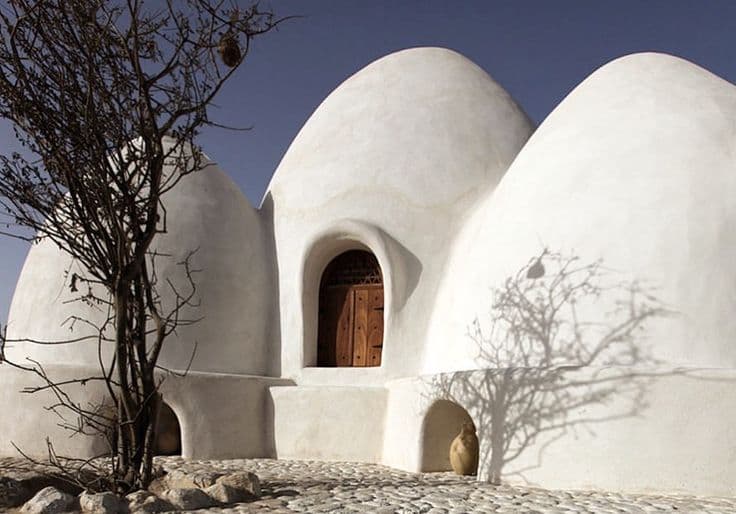
pic: Nader Khalili's Earth houses in Iran
He wrote a book about all his learnings, on how to create such a house and on why. The why is what seems to be similar in every person that lives through a spiritual enlightenment.
Gaudi (Spanish architect who is famous from his paraboloids and parabolic copulas) deacon of Secular Franciscan Order, dedicated his life to build a cathedral in the name of God and he died almost as a hermit.
Buckminster produced poetry on his own, and was calling our Universe 'home' (“You do not belong to you. You belong to the universe,,).
Nader translated all poems and works of Rumi (arabic poet) but his main work consists of the building instructions in which he writes:
Midway in my life I stopped racing with others. I picked up my dreams and started a gentle walk. My dreams were of a simple house, built with human hands out of the simple materials of his world: the elements - Earth, Water, Air and Fire. [...] I touched my dreams in reality by racing and competing with no one but myself.
This idea exists and although it is still called futuristic, there are (some) architects that consider it timeless. I myself had a dream where I was living in a house like that. This is where I started my journey. Can there be a common ground for all those ideas sprouting at a similar time in different locations?
Why don't we begin with a quote:
We are lived by powers we pretend to understand: They arrange our loves; it is they who direct at the end[...] - W. H. Auden
What all that has to do with architecture and domes?
Swiss psychologist C G Jung was convinced that in order to sustain his mental life he had to discover his personal myth again. He did it by going back to his childhood and figuring out what was his passion. It was stones so he decided to build a tower out of stone. He had a small experience in carving stones already but still - he was a psychologist so the structure he made was supposed to fit his spiritual inner self. He said:
It was to be a round structure with a hearth in the center and bunks along the walls. [...] Primitive huts concretize an idea of wholeness, a familial wholeness. [...] So in 1923 the first round house was built,, and when it was finished I saw that it had become a suitable dwelling tower. The feeling of repose and renewal that I had in this tower was intense from the start. - Memories, Dreams, Reflections by C. G. Jung
Let's have a peek into his roundness that gave him peace:
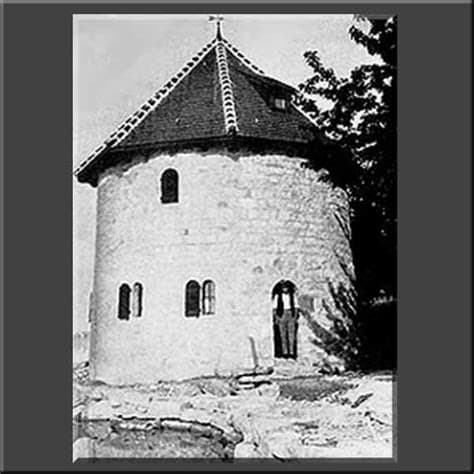
pic: The tower dwelling he built in Bolingen
And although later it grew to a full-blown castle, he was still maintaining the parabolic-shaped inside for creative work. He said: The second tower became for me a place of spiritual concentration.
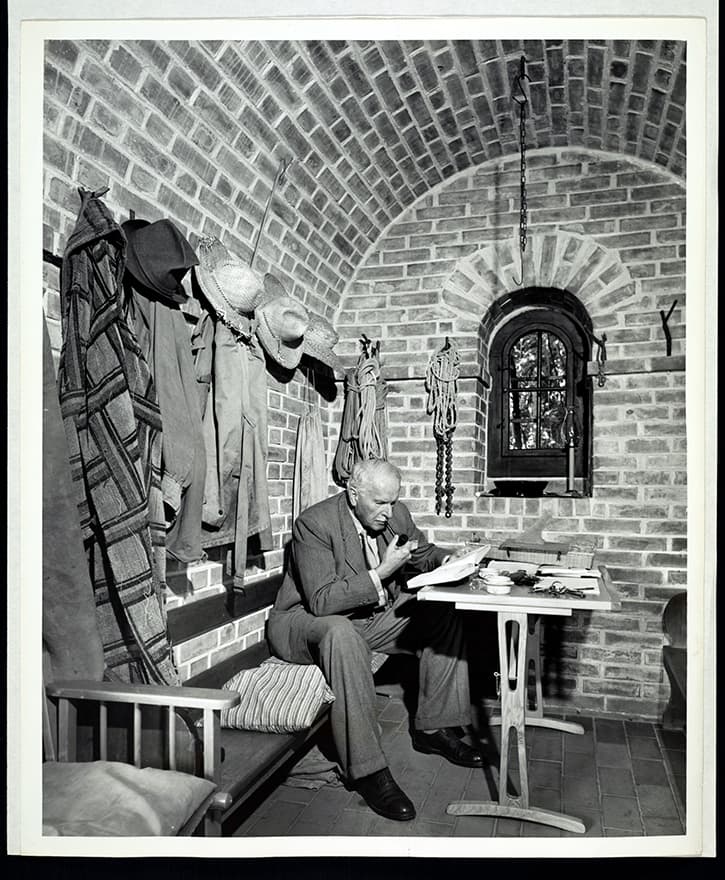
pic: the inside of the tower, where he was resting and creating
In his biography he explains better the reasons for the shape of this structure. Knowing that it is very important, not only for the body to have a shelter but also for the soul.
Circle is a very powerful symbol in many human mythologies.
Are we going to go back to the baginnings, when people lived in domes?
Are we going to make a full circle?
Edits: 1. 22 August 2019 - added Jung's myth and Nader Khalili's life story. 2. 15 February 2020 - added blender renderings, visual representation of the idea.